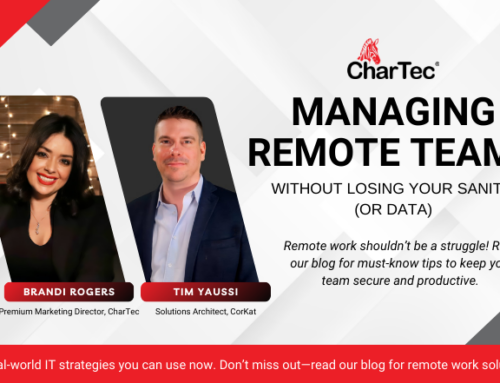Few things are more powerful for motivating sales representatives than a good compensation plan. For MSPs, the most successful way to create winning compensation plans is to align businesses’ interests with those of sales reps.
Some business owners wonder why they should pay salespeople to do what they were hired to do in the first place, but sometimes getting them to do things isn’t the problem; instead, you need to motivate people to do things the right way. Your compensation plan aims to offer compensation that goes above and beyond the base pay to reward activities that align with the company’s goals and boost profitability.
Dan Martin, the director of operations for ARRC and CharTec, recently shared some tips on how MSPs can create a winning performance compensation plan.
Choose The Right Timeframe
First, you must choose the best time frame for evaluating, and every three months is a good option. Focusing on smaller chunks of time like this is helpful if your compensation plans fail. You will have one quarter to deal with the fallout and plenty of time to readjust them for the next quarter. If you use an annual bonus plan, you will have lost your people for a year if things don’t go as expected.
Explain The Terms Clearly
Lay out your compensation plan up front, including amounts and criteria. Also, create a disclaimer that it is subject to change. You will want to change it over time to adapt to your MSP’s evolving needs. Let employees know the performance compensation plan can change quarterly, so they know what to expect.
For example, for a first quarter 2022 compensation plan, you could set performance compensation at $1,000 per technical staff member based on three areas of measurement and compliance. Let’s say you want to set documentation at 20 percent. Then, 30 percent is based on utilization, and 40 percent is SLA compliance. This plan is a reasonable split, but you might change how you weigh these from quarter to quarter depending on your needs.
Three Areas of Measurement and Compliance:
- Ticket compliance documentation: Every ticket must be documented and kept clean, with just the details of the incident and any relevant additional information from the client. The task list must show pending issues and steps, and assign all tasks to resources with dates and notes to foster collaboration. We must also assign tasks as priorities, and tickets related to workstations or servers must have the correct configuration attached.
- Utilization: This refers to using things against contracts and assigning internal tickets. If training is needed, a ticket gets created with techs assigned. We calculate it based on actual compliance using billable time against a 40-hour work week. Techs must account all time that is worked during business hours by the end of the business day to be compliant.
- SLA compliance: This is a team requirement, so it may not figure too heavily into your first-quarter compensation plan. It considers the time to respond, time to resolution plan, and time to resolution. The resolution plan is when the customer believes we have acknowledged them, and it becomes a work in progress. It’s a response that the customer can feel, such as talking to an engineer on the phone rather than getting an email stating the name of the engineer assigned the ticket. Resolution occurs when the ticket is marked as completed.
Procedure to Create Winning Performance Compensation Plans
In the first quarter of a comp plan, when you first introduce the concept, you have some bad habits you need to fix, and it could be a few quarters before it becomes standard behavior. At that point, you may shift the requirements to align with your evolving objectives.
At the end of the quarter, we divide any extra unclaimed pay among the staff members who did well in the three main measurements, based on how much they went above and beyond. Any compensation that remains unclaimed after that goes to the pot for the next quarter.
If all the team members reach their goals and receive their performance compensation, it can be very motivating to offer everyone an extra $500. This means that if even one person doesn’t do it, it will cost everybody else an extra $500. This pressure can inspire your team to make sure everyone gets on board.
Offer Non-Cash Incentives to Create Winning Performance Compensation Plans
You might also consider offering other incentives, like paid time off. If you can’t afford to lose an entire day of work, you could offer your employees an arrangement. You can let them leave at noon on Friday. You can also not let them come in until noon on the following Monday. Alternatively, you might allow the employee to arrive at work two hours later than everyone else.
Another approach is finding out what interests them and offering it to them. For example, perhaps one of your engineers has a hobby like video games that they cant spend family money on. In this case, you could offer the relevant equipment, gear, or video game console as a potential bonus instead of cash.
It can be incredibly useful to get to know the people working for your MSP and use that information to guide your compensation plan.
If you are struggling to develop these compensation plans, head to our next MSP Training Academy. There you will find a track of sessions devoted to your operational processes and procedures.
If you can’t get to our next Academy, check out our On-Demand Webinars.







Leave A Comment